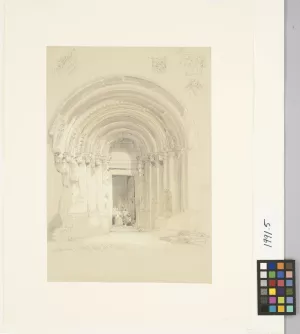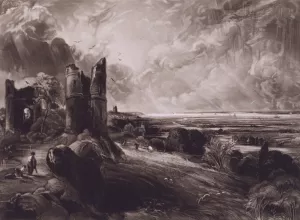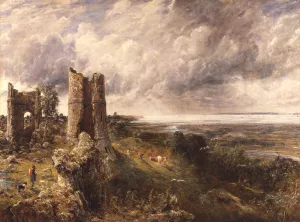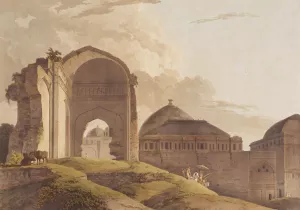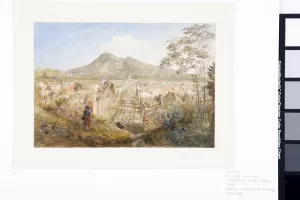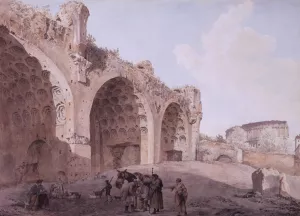During the Romantic era, tourism—and picturesque tourism, in particular—gained popularity across the Continent. While William Gilpin’s enormously popular British domestic tours were circulating in the 1780s and 1790s, an intense debate about the nature of the picturesque was being waged, partly in response to Gilpin’s “authoritative judgements” on the topic (see Stephen Copley's essay "Gilpin on the Wye: Tourists, Tintern Abbey, and the Picturesque" in , ed. Michael Rosenthal, et. al, New Haven: Yale UP, 1997; 133). Aesthetic theorists such as Uvedale Price (one of the leading writers on the topic and author of the 1810 piece Essay on the Picturesque) and Richard Payne Knight, author of the 1805 An Analytical Inquiry into the Principles of Taste, criticized Gilpin’s conceptualization of picturesque landscape viewing as “illogical” and “inconsistent,” suggesting that the picturesque could not be understood as a single aesthetic category (133). Examining this aesthetic rift, Stephen Copley contends that much of the tension surrounding the picturesque may in fact have been due to its conceptual and theoretical limitations. While critics from the 1790s like Price and Knight sought to apply the picturesque to issues of estate management and landscaping, Gilpin’s vision was relegated to domestic tours of the English countryside. According to Copley, Gilpin’s theory of the picturesque is not only circumscribed by its intended audience, English tourists and amateur artists, but also by its geographical range. In his many Observations, perhaps the most famous of which is his Observations on the River Wye (1790), Gilpin anticipates and precludes the expectations of his readers and fellow tourists, telling them not only what they will see but how they should see it. Employing Gilpin’s theories as a framework, this gallery seeks to explore what happens to the picturesque when it is taken beyond the Lake District and the British Isles to more exotic and distant locales. The image of the ruin will be used as a test case, as these physical embodiments of spatial and temporal liminality were of particular interest to Gilpin: he found “attractions in the roughness, irregularity, wildness, and decay” of the crumbling edifices since they could be “taken as signs and tokens of the spontaneously ‘natural’” (Copley 137). By looking at different manifestations of the ruin, we will trace the movement of the picturesque through time and around the globe. Ultimately, this gallery intends to answer the question of whether the picturesque—and, more specifically, Gilpin’s picturesque— is viable in an increasingly global society as well as in an art world that is constantly producing and developing new representational, printing, and compositional techniques.


